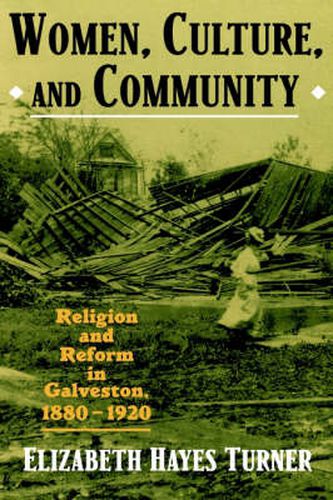Readings Newsletter
Become a Readings Member to make your shopping experience even easier.
Sign in or sign up for free!
You’re not far away from qualifying for FREE standard shipping within Australia
You’ve qualified for FREE standard shipping within Australia
The cart is loading…






Why in the late nineteenth and early twentieth centuries did middle- and upper-class southern women-black and white-advance from the private worlds of home and family into public life, eventually transforming the cultural and political landscape of their community? Using Galveston as a case study, Elizabeth Hayes Turner asks who where the women who became activists and eventually led to progressive reforms and the women sufferage movement. Turner discovers that a majority of them came from particular congregations, but class status had as much to do with reofrm as did religious motivation. The Hurricane of 1900, disfranchisement of black voters, and the creation of city commission government gave white women the leverage they needed to fight for a women’s agenda for the city. Meanwhile, African American women, who were excluded from open civic association with whites, created their own organizations, implemented their own goals, and turned their energies to resisting and alleviating the numbing effects of racism. Separately white and black women created their own activist communities. Together, however, they changed the face of this New South city. Based on an exhaustive database of membership in community organizations compiled by the author from local archives, Women, Culture, and Community will appeal to students of race relations in the post-Reconstruction South, women’s history, and religious history.
$9.00 standard shipping within Australia
FREE standard shipping within Australia for orders over $100.00
Express & International shipping calculated at checkout
Why in the late nineteenth and early twentieth centuries did middle- and upper-class southern women-black and white-advance from the private worlds of home and family into public life, eventually transforming the cultural and political landscape of their community? Using Galveston as a case study, Elizabeth Hayes Turner asks who where the women who became activists and eventually led to progressive reforms and the women sufferage movement. Turner discovers that a majority of them came from particular congregations, but class status had as much to do with reofrm as did religious motivation. The Hurricane of 1900, disfranchisement of black voters, and the creation of city commission government gave white women the leverage they needed to fight for a women’s agenda for the city. Meanwhile, African American women, who were excluded from open civic association with whites, created their own organizations, implemented their own goals, and turned their energies to resisting and alleviating the numbing effects of racism. Separately white and black women created their own activist communities. Together, however, they changed the face of this New South city. Based on an exhaustive database of membership in community organizations compiled by the author from local archives, Women, Culture, and Community will appeal to students of race relations in the post-Reconstruction South, women’s history, and religious history.